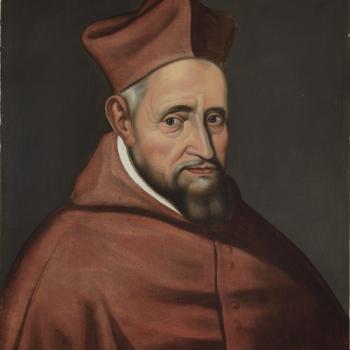Now Featured in the Patheos Book Club
C. S. Lewis
A Life
By Alister McGrath
Book Excerpt
To understand how Lewis passed from theism to Christianity, we need to reflect further on the ideas of J. R. R. Tolkien. For it was he, more than anyone else, who helped Lewis along in the final stage of what the medieval writer Bonaventure of Bagnoregio (1221—1274) describes as the "journey of the mind to God." Tolkien helped Lewis to realise that the problem lay not in Lewis's rational failure to understand the theory, but in his imaginative failure to grasp its significance. The issue was not primarily about truth, but about meaning. When engaging the Christian narrative, Lewis was limiting himself to his reason when he ought to be opening himself to the deepest intuitions of his imagination.
Tolkien argued that Lewis ought to approach the New Testament with the same sense of imaginative openness and expectation that he brought to the reading of pagan myths in his professional studies. But, as Tolkien emphasised, there was a decisive difference. As Lewis expressed in his second letter to Greeves, "The story of Christ is simply a true myth: a myth working on us in the same way as the others, but with this tremendous difference that it really happened."
The reader must appreciate that the word myth is not being used here in the loose sense of a "fairy tale" or the pejorative sense of a "deliberate lie told in order to deceive." This is certainly how Lewis once understood myths—as "lies breathed through silver." As used in the conversation between Lewis and Tolkien, the term myth must be understood in its technical literary sense if the significance of this exchange is to be appreciated.
For Tolkien, a myth is a story that conveys "fundamental things"—in other words, that tries to tell us about the deeper structure of things. The best myths, he argues, are not deliberately constructed falsehoods, but are rather tales woven by people to capture the echoes of deeper truths. Myths offer a fragment of that truth, not its totality. They are like splintered fragments of the true light. Yet when the full and true story is told, it is able to bring to fulfilment all that was right and wise in those fragmentary visions of things. For Tolkien, grasping Christianity's meaningfulness took precedence over its truth. It provided the total picture, unifying and transcending these fragmentary and imperfect insights.
It is not difficult to see how Tolkien's way of thinking brought clarity and coherence to the jumble of thoughts that so excited Lewis's mind at this time. For Tolkien, a myth awakens in its readers a longing for something that lies beyond their grasp. Myths possess an innate capacity to expand the consciousness of their readers, allowing them to transcend themselves. At their best, myths offer what Lewis later termed "a real though unfocused gleam of divine truth falling on human imagination." Christianity, rather than being one myth alongside many others, is thus the fulfilment of all previous mythological religions. Christianity tells a true story about humanity, which makes sense of all the stories that humanity tells about itself.
Tolkien's way of thinking clearly spoke deeply to Lewis. It answered a question that had troubled Lewis since his teenage years: how could Christianity alone be true, and everything else be false? Lewis now realised that he did not have to declare that the great myths of the pagan age were totally false; they were echoes or anticipations of the full truth, which was made known only in and through the Christian faith. Christianity brings to fulfilment and completion imperfect and partial insights about reality, scattered abroad in human culture. Tolkien gave Lewis a lens, a way of seeing things, which allowed him to see Christianity as bringing to fulfilment such echoes and shadows of the truth that arose from human questing and yearning. If Tolkien was right, similarities between Christianity and pagan religions "ought to be there." There would be a problem only if such similarities did not exist.
Perhaps more important, Tolkien allowed Lewis to reconnect the worlds of reason and imagination. No longer was the realm of longing to be sidelined or suppressed, as the "New Look" demanded, and as Lewis feared belief in God might imply. It could be woven—naturally and convincingly—into the greater narrative of reality that Tolkien had presented. As Tolkien later put it, God had willed that "the hearts of Men should seek beyond the world and should find no rest therein."
Christianity, Lewis realised, allowed him to affirm the importance of longing and yearning within a reasonable account of reality. God was the true "source from which those arrows of Joy had been shot . . . ever since childhood." Reason and imagination alike were thus affirmed and reconciled by the Christian vision of reality. Tolkien thus helped Lewis to realise that a "rational" faith was not necessarily imaginatively and emotionally barren. When rightly understood, the Christian faith could integrate reason, longing, and imagination.
3/1/2013 5:00:00 AM




